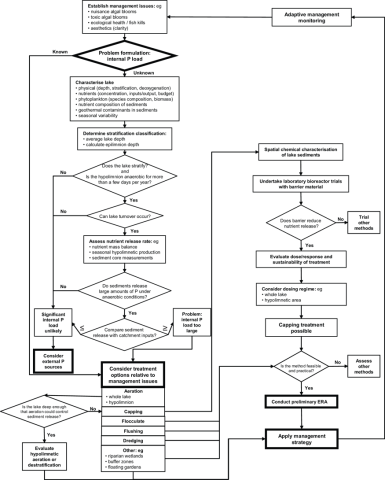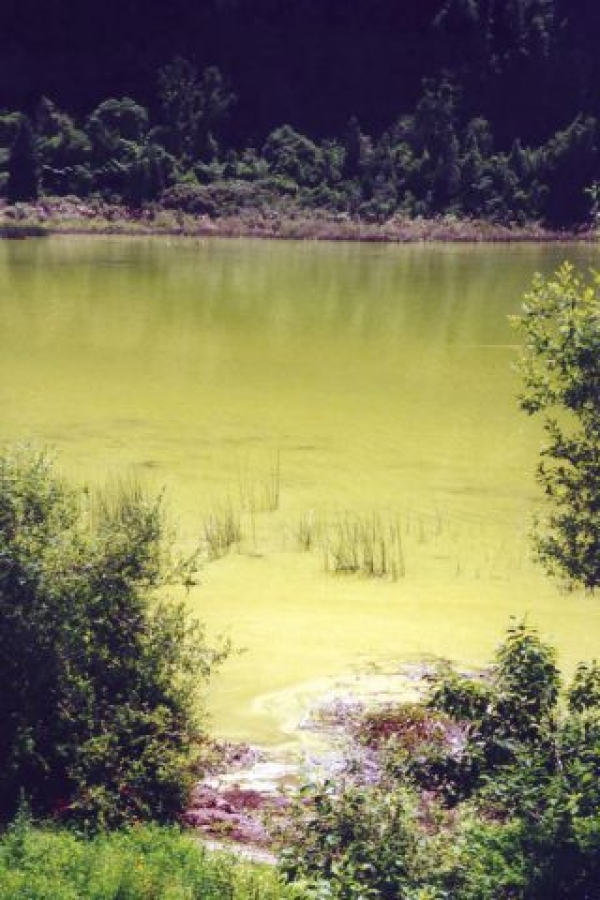Lakes accumulate phosphorus (P) in their sediments, which is fine while the bottom water remains oxygenated. But, if conditions lead to algae accumulating in the lake, the decay of dead algae that settles to the lake bed and bottom water causes anoxia (absence of oxygen) at the bed. Then things go beyond a nasty tipping point.
The iron and manganese to which P is bound release the P under these anoxic conditions. The stores of P in the surface sediments are then released back into the lake, where they can trigger yet more algal production in the next growing season, setting up a vicious cycle of eutrophication.
Options for solving the P-release problem
We have been researching P-management in collaboration with Environment Bay of Plenty, Scion and the University of Waikato, as part of the Rotorua Lakes cleanup. We know there are a range of options for solving the problem of P-release. These include:
- aeration of bottom waters
- addition of a range of agents to strip P from the lake waters
- addition of a range of agents to ‘cap’ the P in the sediments, preventing its release.
Matching the solution to the lake involves a lot of judgement and knowledge of lake physics, ecology and biochemistry.
A management framework for guiding decisions
We have developed a framework for resource managers to guide them through the issues involved in deciding how best to solve the P-release problem. The framework will help managers develop effective strategies to fit the local conditions.

We intend to test the approach further in problem-solving work we are engaged in with regional and district councils and iwi lake managers over the next few years.
Contact
Chris Hickey ([email protected]) and Max Gibbs ([email protected])
Full paper – New Zealand Journal of Freshwater and Marine Research 43 (3)

